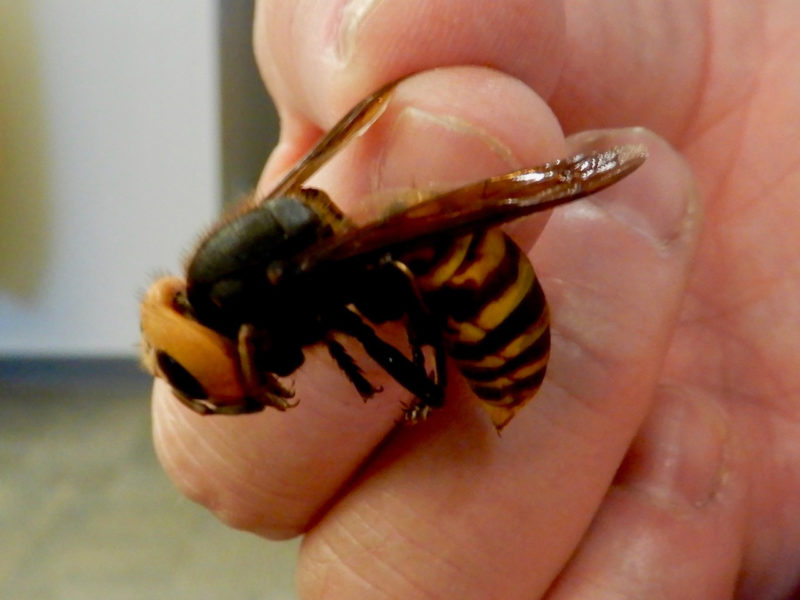This week will see Washington State Department of Agriculture staff destroy a third nest of Asian Giant Hornets, making this year the most active yet for hornet hunters.
The invasive insect, which can measure up to five cm in length, is at the most active stage of its lifecycle right now, seeking out animal proteins in advance of overwintering. Honey bees are among the targets of the hornets, which can wipe out colonies in hours.
WSDA staff hope to wipe out the Asian Giant Hornets first, however. So far, they’ve been successful. WSDA’s first eradication operation at the end of August took place east of Blaine, just 400 metres from the Canadian border. A second nest was destroyed in early September.
All nests to date, including one destroyed late last year, also near Blaine, have been found in hollow deciduous trees. This may indicate the insect’s nesting preference in the region. But it also makes an unconfirmed specimen reported 32 kilometres east of Blaine on the lower slopes of Mount Baker a concern. The sighting is much further east than any previous report, in a locale with trees aplenty.
There have been no confirmed sightings on the BC side of the border this year to date. Provincial apiculturist Paul van Westendorp says this may be due to the insect’s nesting preferences.
“We have started foot patrols in the key areas nearest to the border where the recent nests have been found,” says van Westendorp.
But unlike on the Washington side of the border, where dense mixed forest abounds, the BC side is characterized by rural acreages and open farmland.
“There are far less undisturbed habitat that will make a suitable nest site more difficult,” says van Westendorp.
Confirmed sightings occurred in the Lower Mainland and on Vancouver Island in 2019, with a nest destroyed in Nanaimo that September. Sightings occurred in Langley and Abbotsford last year.
With files from Barbara Johnstone Grimmer


 Don’t blame the wildfires
Don’t blame the wildfires